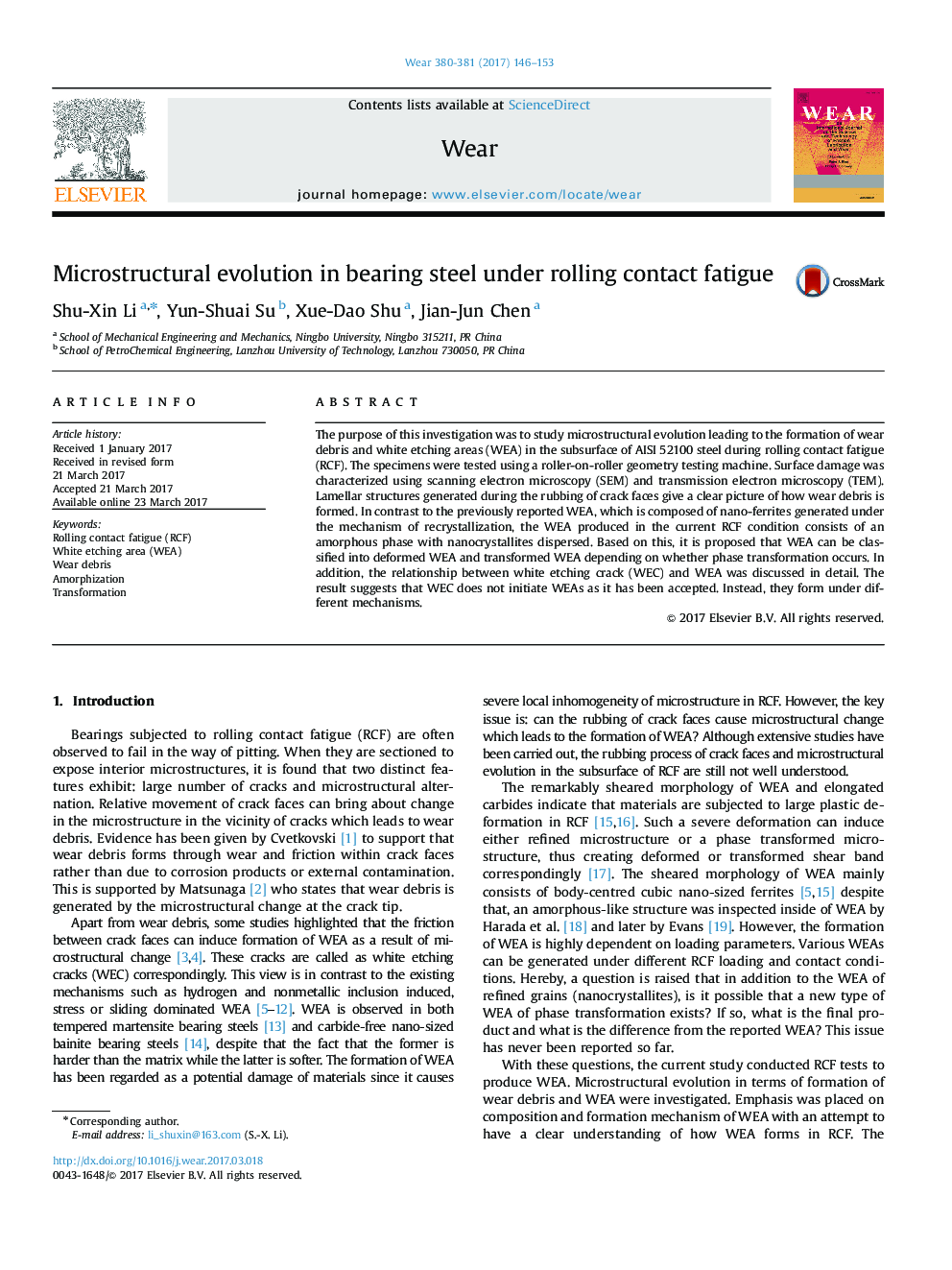| کد مقاله | کد نشریه | سال انتشار | مقاله انگلیسی | نسخه تمام متن |
|---|---|---|---|---|
| 4986500 | 1454950 | 2017 | 8 صفحه PDF | دانلود رایگان |
- How the rubbing of crack faces proceeds to lead to wear debris is clearly revealed.
- WEA is dominated by amorphous phase with nanocrystallines embedded.
- WEA is classified into deformed and transformed WEA and both exist in RCF.
- WEA and WEC form under different mechanisms and are not cause and effect relation.
The purpose of this investigation was to study microstructural evolution leading to the formation of wear debris and white etching areas (WEA) in the subsurface of AISI 52100 steel during rolling contact fatigue (RCF). The specimens were tested using a roller-on-roller geometry testing machine. Surface damage was characterized using scanning electron microscopy (SEM) and transmission electron microscopy (TEM). Lamellar structures generated during the rubbing of crack faces give a clear picture of how wear debris is formed. In contrast to the previously reported WEA, which is composed of nano-ferrites generated under the mechanism of recrystallization, the WEA produced in the current RCF condition consists of an amorphous phase with nanocrystallites dispersed. Based on this, it is proposed that WEA can be classified into deformed WEA and transformed WEA depending on whether phase transformation occurs. In addition, the relationship between white etching crack (WEC) and WEA was discussed in detail. The result suggests that WEC does not initiate WEAs as it has been accepted. Instead, they form under different mechanisms.
203
Journal: Wear - Volumes 380â381, 15 June 2017, Pages 146-153
